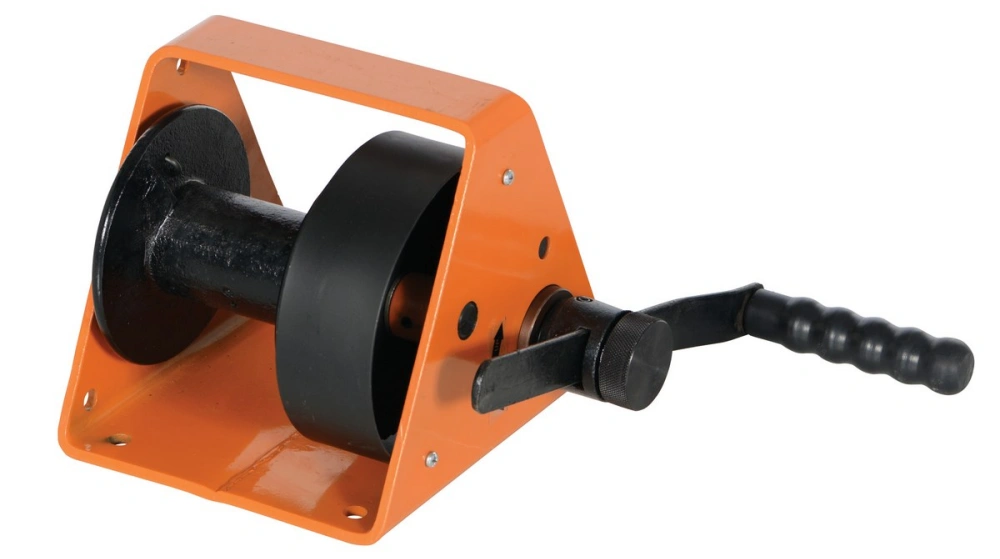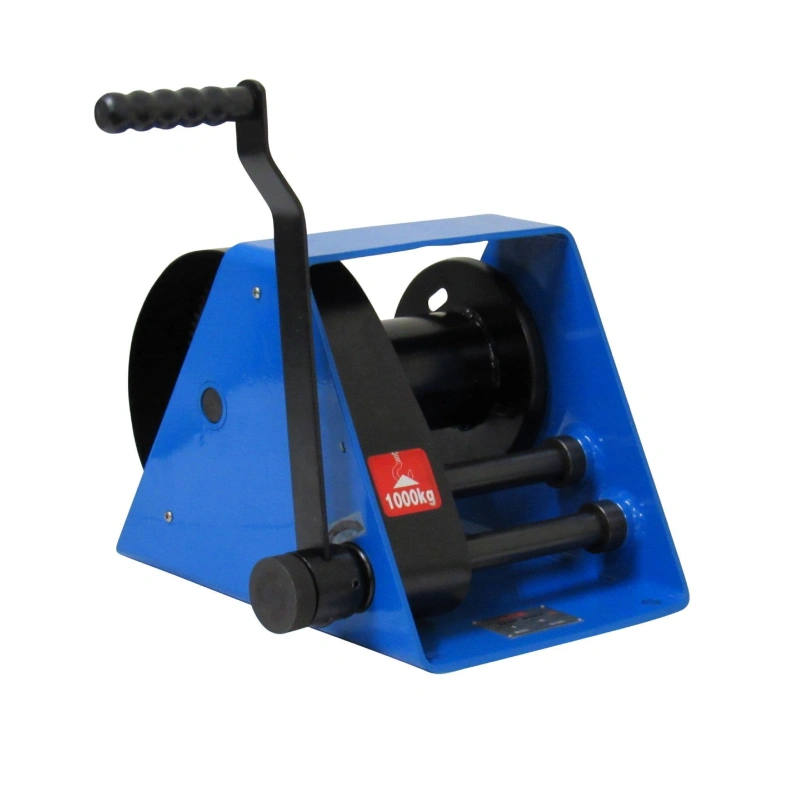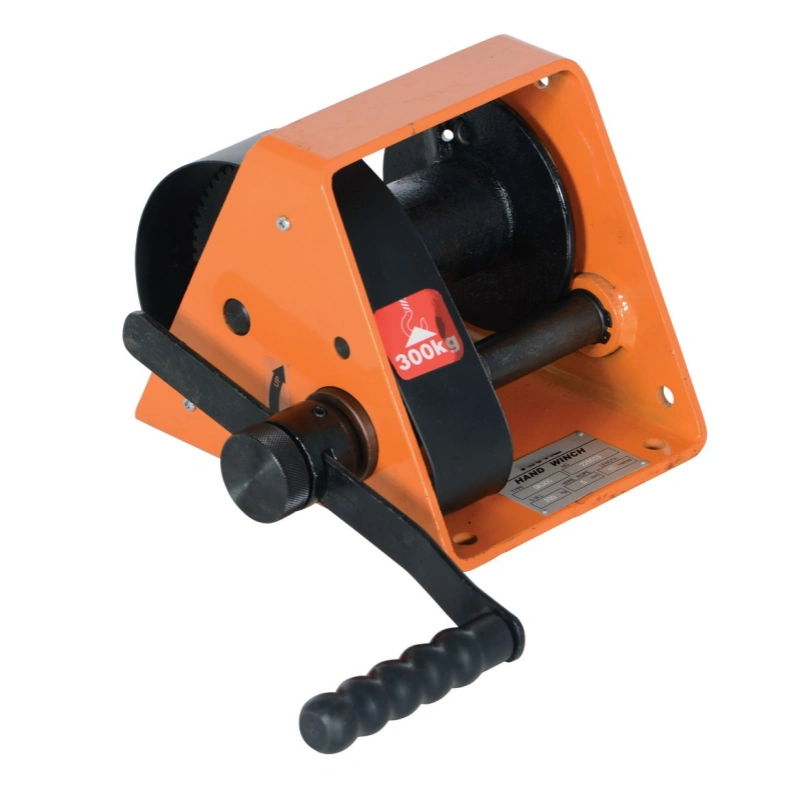You can use a hand winch without risk by focusing on safety, staying alert, and understanding your equipment. Serious accidents often occur when clothing gets caught or when users lack proper training.
Powerful Machinery designs hand cable winches with strict safety standards to protect you from these hazards. Review the table below to see common incidents associated with improper winch use:
Type of Incident | Description |
|---|---|
Getting Caught in Nets/Lines | Tangling can lead to injuries or being dragged overboard. |
Getting Caught in the Winch | Loose clothing may cause serious injuries or fatalities. |
Fatal Incidents | Example: A Worker trapped between the net and the winch in 2011. |
Non-fatal Incidents | Example: A Young worker lost his hand due to inexperience. |
Common Causes | Snagged clothing, poor maintenance, lack of training, and weak communication. |
Clothing Involvement | Nearly half of the accidents involved clothing caught in the winch. |
Reliable equipment and careful attention help you stay safe every time you operate a winch.
Key Takeaways
Always prioritize safety by receiving proper training and wearing protective gear when operating a hand winch.
Conduct a thorough pre-use inspection of your winch and cables to identify any damage or wear that could lead to accidents.
Select a hand winch that exceeds the weight of your heaviest load to ensure safe operation and prevent overload risks.
Follow best practices for setup and operation, including standing clear of the load path and using a winch damper to reduce recoil risk.
Regularly maintain your winch by cleaning, lubricating, and replacing damaged parts to extend its lifespan and ensure reliability.
Winch Safety Essentials
Why Winch Safety Matters?

You must treat winch safety as a top priority every time you operate lifting equipment. Accidents can happen quickly if you ignore best practices or overlook routine checks.
Many injuries result from simple mistakes, such as standing in the load path or using a winch beyond its rated capacity. You can prevent these incidents by understanding the risks and following strict safety protocols.
Powerful Machinery’s hand winches meet rigorous industry standards. The company’s products carry certifications that demonstrate a commitment to safety and reliability. Review the table below to see how these certifications impact your safety:
Certification Type | Description | Impact on User Safety |
|---|---|---|
CE Marking | Compliance with EU health, safety, and environmental standards. | Ensures basic safety standards are met. |
ISO 9001 | Quality management system standard. | Demonstrates consistent quality and safety. |
IP Ratings | Ingress protection against dust and water. | Ensures durability and safety in tough environments. |
Key Safety Guidelines
You can reduce risk by following best practices recommended by safety organizations and industry leaders. Always remember these essential guidelines:
Receive adequate training before operating any hand winch.
Inspect your equipment regularly to confirm proper function.
Wear protective gear, including gloves and fitted clothing.
Never exceed the winch’s load capacity.
Stand clear of the load path to avoid unexpected movement.
Set up and align the winch system correctly before use.
Do not leave the controls while a load is suspended.
Never allow anyone to stand or pass under a suspended load.
Use additional safety measures, such as a pawl and ratchet, if a load must remain suspended.
Tip: Conduct a pre-use inspection every time. This simple habit can prevent equipment failure and keep you safe.
By following these best practices, you create a safer work environment and protect yourself and your team. Powerful Machinery’s certified products give you the confidence to focus on the task, knowing your equipment meets the highest safety standards.
Understanding Hand Cable Winches
What Is a Hand Cable Winch?
You use hand cable winches to lift, pull, or position heavy objects in many industries. These devices rely on a manual crank to operate gears and a drum, which moves a steel cable or synthetic rope. You often see hand cable winches in construction, forestry, mining, and marine settings.
They help you tow boats, haul trailers, or move building materials. Powerful Machinery offers both the GR Hand Winch and HWV Series Manual Winch, which meet strict safety standards and deliver reliable performance for these tasks.
You can operate hand cable winches by manpower.
You use them for vertical lifting, horizontal pulling, or tilting.
Common applications include construction sites, water conservancy projects, and wharves.
Main Components Overview
You must understand the main parts of hand cable winches to use them safely. Each component plays a specific role in safe operation. The table below shows the essential parts and their functions:
Component | Role in Safe Operation |
|---|---|
Drum | Stores and dispenses the cable or rope efficiently. |
Handle | Allows you to apply manual force to crank the winch. |
Gear Mechanism | Transfers rotational force from the handle to the drum, giving you a mechanical advantage. |
Brake System | Prevents the load from slipping or unwinding unintentionally, ensuring controlled operation. |
Cable/Rope | Connects and transfers force from the winch to the load, must be strong and durable. |
You should inspect each part before use to confirm it works properly.
How Hand Cable Winches Work?
You operate hand cable winches by turning the handle, which rotates the drum and winds the cable or rope. The gear mechanism multiplies your effort, making it easier to move heavy loads. The brake system keeps the load secure and prevents accidental release.
Powerful Machinery’s hand winch models feature automatic brakes and locking mechanisms, which add extra safety. These features allow you to control the load precisely and maintain stability during operation.
Safety Feature | Description |
|---|---|
Locking Mechanism | Prevents unintentional cable release. |
Controlled Operation | Allows for precise handling during use. |
Load Stability | Maintains stability of the load while in operation. |
Tip: Always check the brake and locking mechanisms before you start. This step helps you avoid accidents and ensures safe operation.
Safe Setup & Operation
Choosing the Right Winch
You must select a hand winch that matches your application and environment. Start by identifying the heaviest load you expect to lift or pull. Choose a winch with a rated capacity above this maximum to maintain safety.
Review the cable length and material to ensure it fits your task and resists wear. Stainless steel cables offer excellent durability and corrosion resistance, especially in harsh conditions.
Consider the gear mechanism and transmission ratio. A higher ratio increases lifting efficiency and reduces manual effort. Look for models with automatic brakes and robust locking systems. These features help you control the load and prevent accidental release.
Powerful Machinery’s GR Hand Winch and HWV Series Manual Winch include heavy-duty braking systems and rugged steel frames, supporting safe operation in demanding environments.
Tip: Always follow proper installation procedures to minimize risk and maximize equipment life.
Key Factors for Selecting a Hand Winch:
Factor | Why It Matters |
|---|---|
Load Capacity | Prevents overload and ensures safe operation |
Cable Length/Material | Matches task requirements and resists corrosion |
Gear Mechanism | Optimizes lifting efficiency |
Safety Features | Automatic brakes and locking mechanisms |
Material Composition | Stainless steel increases durability |
Installation Steps
You must install your hand winch correctly to avoid hazards and ensure reliable performance. Gather all necessary tools, including a wrench set, drill, screws, bolts, and a level. Wear personal protective equipment and clear the area of obstacles. Stabilize the mounting surface, such as a trailer or platform.
Follow these steps for safe installation:
Prepare the installation area and collect all required tools.
Put on gloves, safety goggles, and fitted clothing.
Select a strong, accessible mounting location aligned with the load path.
Position the winch and use a level to ensure proper alignment.
Mark the drill holes and drill them accurately.
Secure the winch with high-strength bolts or screws, tightening them with a torque wrench.
Check the connection for firmness and stability.
Avoid common mistakes such as mounting the winch to a weak structure, using low-grade bolts, or failing to tighten hardware to specifications. Always route cables away from sharp edges and heat sources. Spool the winch line onto the drum under tension to prevent binding and damage.
Note: Proper installation procedures reduce the risk of winch failure and protect you from injury.
Operating Procedures
You must inspect your hand winch before each use. Look for frayed cables, loose bolts, and signs of corrosion. Confirm that the winch is securely mounted and the anchor points are strong. Attach the winch hook to the load using certified rigging accessories.
Wear gloves and safety goggles. Stand with a stable posture and use your legs and core muscles when operating a winch. Keep a safe distance from the winch and the load. Place a winch damper over the cable to reduce recoil risk if the cable fails.
Operate the winch slowly and steadily. Engage the ratchet or brake mechanism as needed. Automatic brakes on Powerful Machinery winches engage when you release the handle, preventing accidental load release and enhancing control.
Safe Operating Checklist:
Inspect the winch and cable for damage.
Confirm secure mounting and anchor points.
Attach hook and rigging accessories correctly.
Wear protective gear.
Maintain a safe body position and distance.
Use a winch damper for added safety.
Operate slowly and steadily.
Alert: Never exceed the rated load capacity. Overloading increases the risk of equipment failure and injury.
Inspection & Maintenance
You must inspect and maintain your hand winch regularly to ensure safety and extend its lifespan. Check the cable for fraying, corrosion, or kinks. Examine the drum, gears, and brake system for wear or damage. Lubricate moving parts according to manufacturer recommendations.
Clean the winch after each use, especially if exposed to dirt, moisture, or chemicals. Replace worn or damaged components immediately. Store the winch in a dry, secure location when not in use.
Maintenance Table:
Task | Frequency | Purpose |
|---|---|---|
Inspect cable & drum | Before each use | Detect damage, prevent failure |
Lubricate gears | Monthly | Reduce wear, ensure smooth use |
Clean winch | After each use | Prevent corrosion, maintain safety |
Replace damaged parts | As needed | Maintain reliability |
Store properly | Always | Protect from the environment |
Tip: Regular inspection and maintenance keep your hand winch safe and reliable for every job.
By following these steps, you ensure safe setup, operation, and maintenance of your hand winch. Powerful Machinery’s advanced safety features and durable construction support you in every application.
Preventing Hazards
Overload Risks
You face serious risks when you overload a hand winch. Equipment failure and personal injury can occur if you exceed the rated capacity. Powerful Machinery’s winches include safety mechanisms such as bendable handles, breakable stress links, and double locking pawl systems.
These features alert you to overload conditions and lock the load in place, helping you avoid sudden release or damage. Always check the weight of your load and confirm it does not exceed the winch’s rating. Using correct handling techniques and staying clear of the load path are essential steps for avoiding accidents.
Note: If you notice a bent handle or hear a snap from a stress link, stop immediately and unload safely.
Cable Management
Proper cable management keeps your winch safe and reliable. Inspect the cable for fraying, corrosion, or kinks before each use. Wind the cable evenly onto the drum, leaving at least three turns to prevent slippage. Avoid overlapping layers and keep the cable away from sharp edges.
Powerful Machinery’s robust construction supports smooth cable operation and reduces wear. If you spot damage, replace the cable right away. Good cable management prevents sudden failures and keeps your equipment in top condition.
Cable Management Tips | Benefit |
|---|---|
Inspect for damage | Prevents unexpected failure |
Wind the cable evenly | Ensures smooth operation |
Replace damaged cables | Maintains safety |
Brake & Gear Issues
You must pay close attention to the brake and gear systems. Powerful Machinery’s automatic brake engages when you release the handle or if the winch loses power, holding the load securely. This feature prevents runaway winches and keeps the load stable during emergencies.
Regularly inspect gears for wear and lubricate them as recommended. If you notice unusual noises or resistance, use troubleshooting tips from the manufacturer to identify and fix problems. Fail-safe brakes and high-strength gears work together to protect you and your team.
Tip: Test the brake system before each use. Confirm it engages smoothly and holds the load without slipping.
Personal Safety Tips
You protect yourself best by wearing the right personal protective equipment. Heavy work gloves shield your hands from cable abrasion. Eye protection guards against flying debris.
A hard hat may be required in some work environments. Always wear fitted clothing to prevent snagging. Stand clear of the load path and communicate clearly with your team. These habits reduce risk and help you maintain a safe workspace.
Wear heavy gloves
Use eye protection
Put on a hard hat if needed
Avoid loose clothing
Stay clear of the load path
Alert: Personal safety starts with preparation. Make safety checks part of your routine every time you use a winch.
Practical Safety Checklist
Pre-Use Inspection
You should always inspect your winch before every operation. A thorough check helps you spot problems early and avoid accidents. Use the following table as a quick reference for your inspection routine:
Item No. | Inspection Item |
|---|---|
1 | The winch machine must be in good condition and certified by a competent person. |
2 | Remote control and emergency switches must work without delay. |
3 | Ensure the winch is fixed securely with strong support. |
4 | Sling knots must be tied properly and show no defects. |
5 | The wire sling should be free from damage or corrosion. |
6 | The roll drum must have enough space for the full sling. |
7 | Hook must have a safety latch. |
8 | Cover all rotating parts with fixed guards. |
9 | The power cable must be undamaged and connected to an industrial plug. |
10 | Only trained personnel should operate the panel. |
11 | Inspect the panel regularly as scheduled. |
12 | Always use proper PPE when operating the panel. |
13 | Ground the winch machine properly. |
You protect yourself and your team when you follow this checklist every time you inspect your winch.
Maintenance Tips
Regular care keeps your equipment safe and reliable. Follow these preventative maintenance tips to extend the lifespan of your hand winch:
Inspect your winch and cable for wear, corrosion, or damage before and after each use.
Clean the winch to remove dirt and debris that could affect performance.
Lubricate gears and moving parts to reduce resistance and prevent wear.
Keep the cable dry and spool it evenly to avoid knots and tangles.
Replace damaged parts immediately to maintain safety.
Store your winch in a dry, secure place when not in use.
Tip: Consistent maintenance reduces the risk of failure and keeps your winch ready for every job.
Quick Safety Reference
Stay safe by following these essential winch safety reminders:
Use your winch according to the owner’s manual.
Choose a winch that matches the weight of your load.
Inspect your winch and cables for damage before each use.
Keep the work area clear of bystanders.
Wear gloves to protect your hands.
Never grab the cable with your bare hands.
Stand clear of the loaded winch line.
Plan your operation and stay focused throughout the task.
Remember: A few minutes spent on safety checks can prevent serious accidents.
Conclusion
You protect yourself and your team by following essential winch safety practices. Always inspect your equipment, wear proper protective gear, and use the right winch for the job. Powerful Machinery’s certified products feature automatic brake systems and load-sensing technology, which maximize safety and efficiency.
Recent innovations, such as the forward-reverse clamping plate and self-locking mechanisms, help prevent accidents and keep operations secure.
Stay alert, maintain regular inspections, and prioritize safety every time you operate a hand winch.
FAQ
How do you know which hand winch is right for your job?
You should check the load capacity, cable length, and safety features. Powerful Machinery provides detailed specifications for each model. Match your winch to the weight and environment of your task for safe and efficient operation.
What safety gear should you wear when using a hand winch?
You need heavy-duty gloves, safety goggles, and fitted clothing. In some environments, you should wear a hard hat. Protective gear helps prevent injuries from cable abrasion, flying debris, and accidental contact with moving parts.
How often should you inspect your hand winch?
You should inspect your winch before every use. Look for frayed cables, loose bolts, and signs of corrosion. Regular inspection helps you catch problems early and maintain safe operation.
Tip: Create a checklist for your inspection routine to stay organized.
What should you do if the cable shows signs of damage?
You must replace the cable immediately. Damaged cables increase the risk of failure and injury. Powerful Machinery recommends using certified replacement cables for maximum safety and reliability.
Cable Condition | Action Required |
|---|---|
Frayed or kinked | Replace immediately |
Corroded | Replace immediately |


